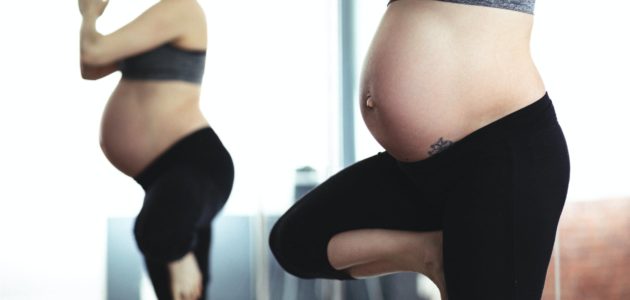
Exercising in the third trimester
Even though it may be the absolute last thing you feel like at the time, during the 30-40 week mark of your pregnancy, it is important to keep up exercise for a multitude of reasons. It can help you to cope with labour, adapt to your changing shape and makes it easier to resume your fitness routine after the birth. Exercising during pregnancy can help prevent or treat gestational diabetes, reduce backache, constipation, bloating, and swelling and improve your mood and feeling of wellbeing.
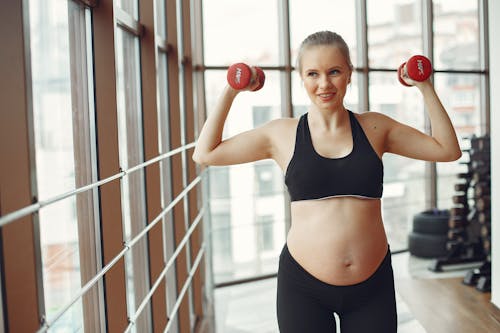
What is important however, is that you know how to adapt your normal fitness regime to your new body. It is essential not to exhaust yourself and to slow down as your pregnancy progresses. As taking specialised classes is no longer possible due to Covid restrictions, we have researched the best ways for you to continue to exercise at home in your third trimester.
The NHS advises that if you were not regularly physically active before pregnancy that beginning with no more than 15 minutes of continuous exercise, 3 times a week is a good place to start. They advise increasing this gradually to daily 30-minute sessions, only when you feel comfortable and capable and that the exercise does not have to be strenuous to be beneficial.
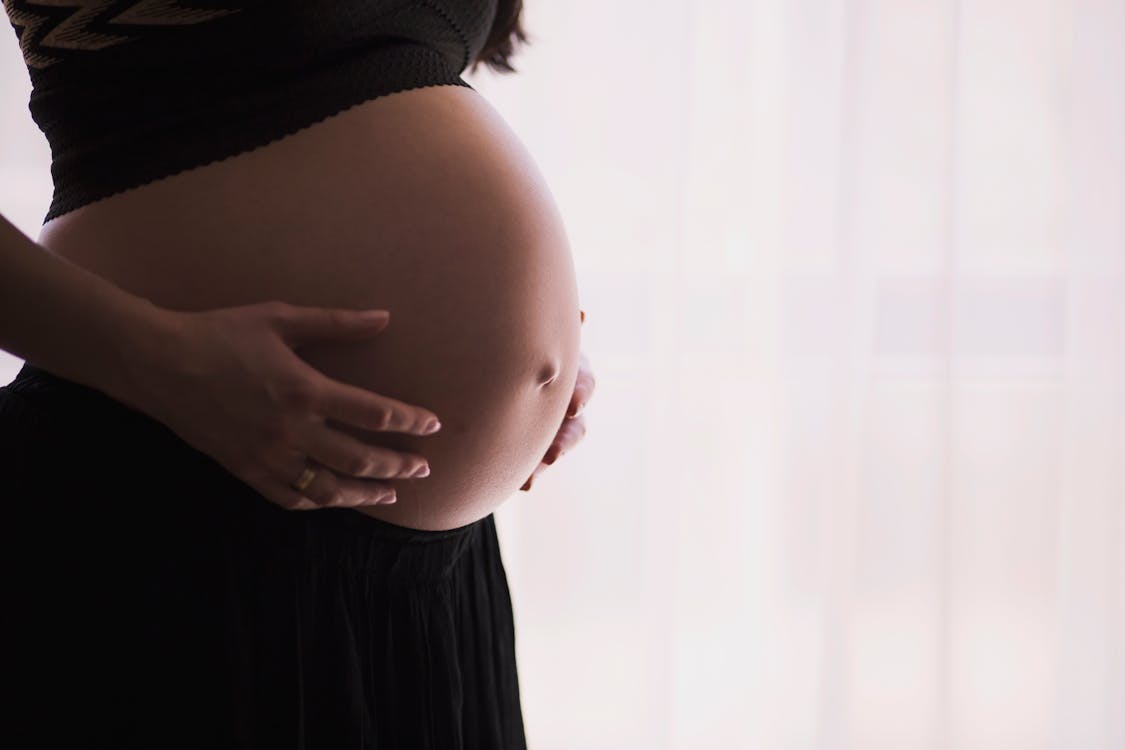
Some other tips are;
- Always include a warm-up and cool down session in your routine
- Keep hydrated
- Don’t practice strenuous exercise in hot weather
- Exercises with high risk of falls should be avoided
- If a class is being taken, ensure your instructor knows you are pregnant.
- Do not lie flat on your back after 16 weeks as this can cause you to feel faint
The HSE gives a list of exercises to avoid while pregnant
- horse riding
- skiing
- field sports
- gymnastics
- cycling
- scuba diving
But now, on to our exercises!
Stomach-strengthening exercises
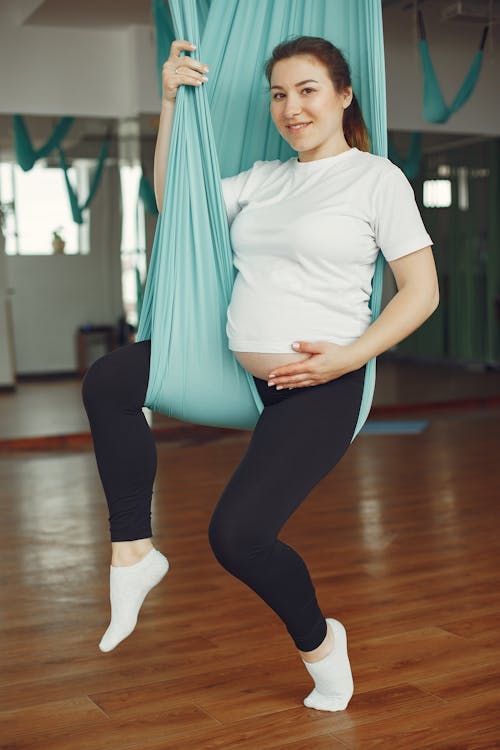
Our backs take the brunt of our bump weight, so it is important to strengthen our stomach muscles in order for them to lend some additional support to the hollow of your back.
On all fours, ensuring that your knees and hips are aligned, as well as your hands and shoulders, curl your back upwards to the sky, pulling your stomach in. Without locking your elbows, allow your head to relax gently forward. Hold for a few seconds.
Gently returning to the box position, ensure not to hollow your back, instead keeping it straight and strong.
Repeat slowly ten more times, ensuring your muscles in your stomach are working, and there is no strain on the back.
Pelvic floor exercises
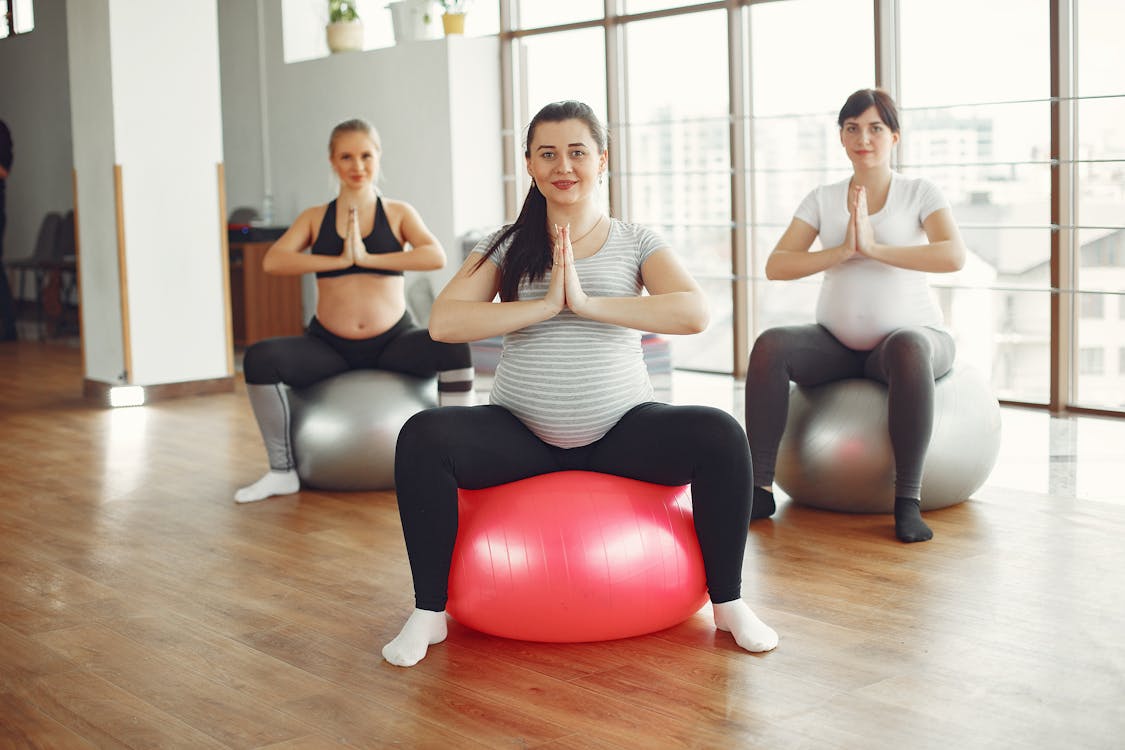
These exercises will help to combat stress incontinence that can often occur after pregnancy. By strengthening the layers of muscle, we can help to prevent the leaking of urine.
Tense up your bottom, as if you're trying to stop yourself going to the toilet.
At the same time, draw in your vagina as if you're gripping a tampon, and your urethra as if to stop the flow of urine.
At first, do this exercise quickly, tightening and releasing the muscles immediately. Then do it slowly, holding the contractions for as long as you can before you relax: try to count to 10.
The NHS recommend trying to do 3 sets of 8 squeezes every day: to help you remember, you could do a set at each meal.
Pre-natal yoga

During the final weeks of pregnancy, the more upright you can be, the better, as it allows baby to get into the optimum position for birth. These are things you can do to help gravity get your baby into that position.
Jessica Rumple, Youtuber, pre- and post-natal fitness instructor and registered dietician has some great videos recommending exercises for all the stages of your pregnancy.
Her videos include some great ideas, but also modifications for those struggling with the positions, making it a thoroughly accessible class. She advises to only do exercises that we should always listen to our body and only do movements that feel safe for you and your baby.
Check out her videos here!
Low impact aerobic exercise
Walking, swimming and stationary bikes are good forms of low impact, aerobic exercise during pregnancy. Yoga, pilates and aqua aerobics are also good and include stretching and strengthening.
Swimming or aqua aerobics in pregnancy is a great way to exercise. The water helps lift your baby and eases any pressure on your back.
If you want to go to an exercise class, choose one that's aimed specifically for pregnancy.
The HSE also give a handy guide on knowing when to stop exercising and some of the signs or signals your body may giving you that its time to stop exercising. These include;
- shortness of breath before exercise
- chest pain or palpitations
- feeling faint or dizzy
- painful contractions or early labour
- leaking amniotic fluid
- vaginal bleeding
- excessive tiredness or fatigue
- abdominal pain, particularly in the back or pubic area
- pelvic girdle pain
- reduced movement of your baby
- headache
- muscle weakness
- calf pain or swelling

It is important to consult your doctor before undertaking any kind of regimented exercise routine.

